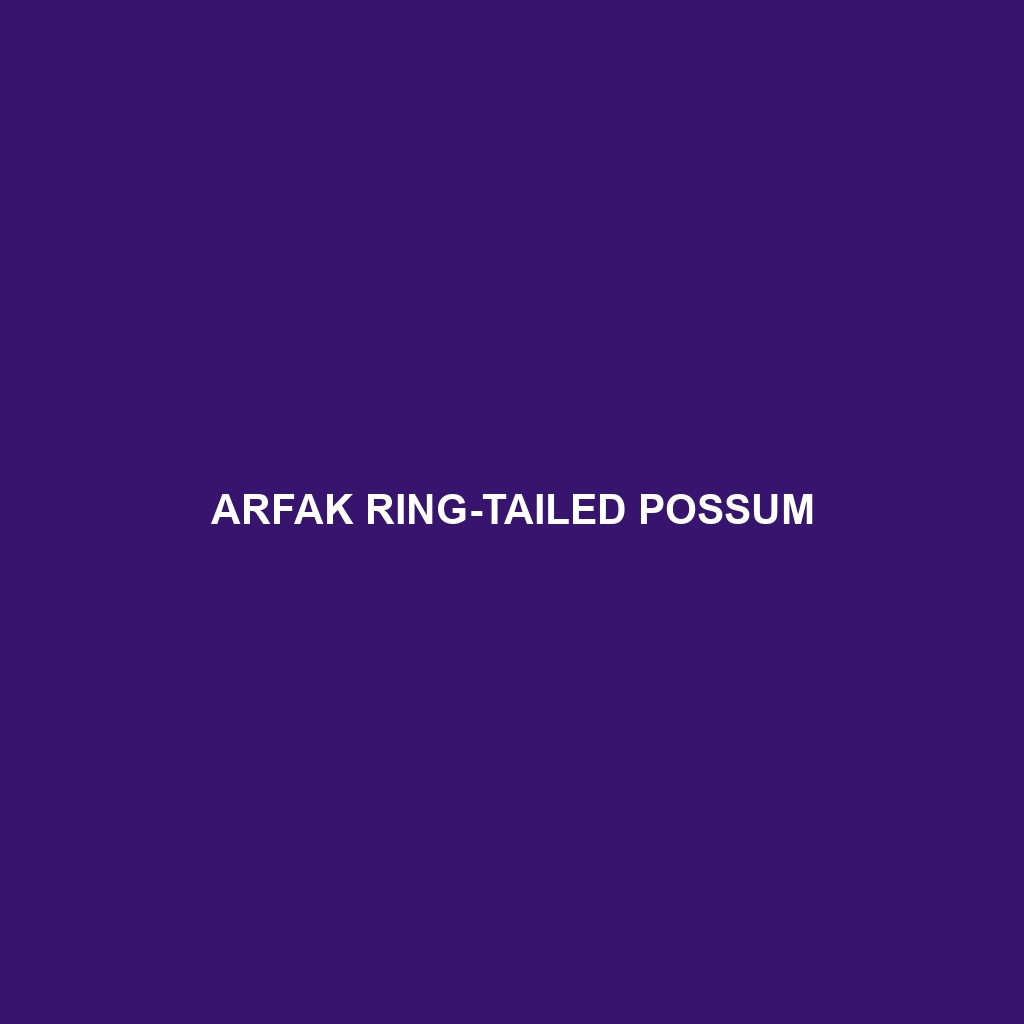Arfak Ring-tailed Possum: A Comprehensive Overview
:
The Arfak Ring-tailed Possum (Pseudochirulus schlegeli) is a fascinating marsupial native to the montane forests of Papua New Guinea. Named after the Arfak Mountains, this possum is known for its distinctive prehensile tail, which it uses masterfully for navigating the treetops. An arboreal specialist, the Arfak Ring-tailed Possum plays a crucial role in its ecosystem, contributing to seed dispersal and forest dynamics.
Physical Characteristics:
Size: This medium-sized possum typically measures around 30-40 cm (12-16 inches) in body length, with an additional 25-35 cm (10-14 inches) tail length.
Coloration: The fur of the Arfak Ring-tailed Possum is generally a rich brownish-grey with a lighter underbelly, providing excellent camouflage against the bark and leaves of its forest habitat. Some individuals may exhibit slight variations in hue, ranging from more reddish to grey tones.
Special Features: One of the most distinctive features of this possum is its prehensile tail, which is highly flexible and strong, allowing it to grasp branches securely. Their large, forward-facing eyes are adapted for night vision, and their sharp claws assist in climbing.
Behaviors:
Social Interactions: Arfak Ring-tailed Possums are primarily solitary animals, though they may occasionally be seen in pairs, particularly during the breeding season. They communicate through a series of vocalizations and scent markings to establish territory and avoid conflicts.
Feeding Habits: These possums are primarily herbivorous, feeding on a diet that includes leaves, fruits, flowers, and occasionally small invertebrates. They have a specialized digestive system to process the high-fiber content of their plant-based diet.
Ecological Roles: As frugivores and folivores, Arfak Ring-tailed Possums are important seed dispersers, aiding in the propagation of various plant species. Their feeding activities also contribute to the health and regeneration of their forest ecosystems.
Habitats:
Geographical Range: The Arfak Ring-tailed Possum is endemic to the montane rainforests of Papua New Guinea, particularly in the Arfak Mountains and surrounding highlands.
Preferred Habitat: They thrive in dense, montane forests at elevations ranging from 1,500 to 2,900 meters (4,900 to 9,500 feet). These habitats provide ample food resources and canopy cover for shelter and protection from predators.
Adaptations:
Arboreal Lifestyle: Their prehensile tails and sharp claws are perfect adaptations for an arboreal lifestyle, allowing them to navigate the treetops with ease.
Nocturnal Activity: Being nocturnal, they have large eyes adapted for enhanced night vision, helping them forage and avoid predators in the dark.
Camouflage: Their coloration helps them blend seamlessly with the forest foliage, providing an effective means of avoiding detection by predators.
Conservation Status:
The conservation status of the Arfak Ring-tailed Possum is currently listed as Least Concern by the International Union for Conservation of Nature (IUCN). However, their populations are subject to threats from habitat destruction due to logging and agricultural expansion. Conservation efforts focus on preserving their montane forest habitats and mitigating human impacts.
Fun Facts:
The Arfak Ring-tailed Possum is named after the Arfak Mountains, where it was first discovered.
Unlike many other possum species, the Arfak Ring-tailed Possum has a highly developed sense of balance, allowing it to perform acrobatic feats in the trees.
These possums have a unique digestive adaptation known as hindgut fermentation, which allows them to extract maximum nutrients from their fibrous diet.
By understanding and appreciating the unique attributes of the Arfak Ring-tailed Possum, we can better appreciate the rich biodiversity of Papua New Guinea and the vital roles these animals play in maintaining the health of their montane forest ecosystems.
